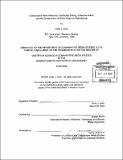| dc.contributor.advisor | Joseph Dumit. | en_US |
| dc.contributor.author | Chan, Anita J. (Anita Jean), 1976- | en_US |
| dc.contributor.other | Massachusetts Institute of Technology. Dept. of Comparative Media Studies. | en_US |
| dc.date.accessioned | 2009-01-30T18:37:35Z | |
| dc.date.available | 2009-01-30T18:37:35Z | |
| dc.date.copyright | 2002 | en_US |
| dc.date.issued | 2002 | en_US |
| dc.identifier.uri | http://dspace.mit.edu/handle/1721.1/40021 | en_US |
| dc.identifier.uri | http://hdl.handle.net/1721.1/40021 | |
| dc.description | Thesis (S.M.)--Massachusetts Institute of Technology, Dept. of Comparative Media Studies, 2002. | en_US |
| dc.description | Includes bibliographical references. | en_US |
| dc.description.abstract | The growth and spread of the Internet have generated new possibilities for public participation with news content, forcing news scholars and makers alike to confront a number of questions about what the nature, role and function of news, journalists, and audiences are in a networked society. If news gathering, reporting, and circulation had existed for generations as a largely centralized process, left to the minds and hands of reporters organized through news rooms across the nation, the environment of the Internet and interactive properties of new media counter such a model, affording users with as much capacity to produce their own news content as they have had to merely consume it. This thesis, then, seeks to contribute to scholarship on online journalism through an ethnographic study of the five-year-old, technology-centered news site Slashdot.org as an emerging model of online news production and distribution I call a collaborative new network. Embodying a pronounced case of the decentralization of editorial control in online news environments, Slashdot's collaborative news network operates through an inscription of users as the primary producers of news content; an expansion of an understanding of the site of news to include not just journalistic reports and articles, but the discussion by users around them; debate around issues of editorial authority; a valuation of subjectivity and transparency as properties of news; and the generation of user-driven forms of collective action whose effects extend beyond the environment of Slashdot's network. This study will focus, then, on an examination of the social practices and processes surrounding the production, consumption and distribution of news on Slashdot, and the meanings that are generated through such activities. Through such an analysis, I hope to explore how practices enacted on Slashdot (re)construct users' relationship to news, editors, and one another - and similarly investigate how it (re)constructs editors relationship to news, readers, and one another. | en_US |
| dc.description.statementofresponsibility | by Anita J. Chan. | en_US |
| dc.format.extent | 155 leaves | en_US |
| dc.language.iso | eng | en_US |
| dc.publisher | Massachusetts Institute of Technology | en_US |
| dc.rights | M.I.T. theses are protected by
copyright. They may be viewed from this source for any purpose, but
reproduction or distribution in any format is prohibited without written
permission. See provided URL for inquiries about permission. | en_US |
| dc.rights.uri | http://dspace.mit.edu/handle/1721.1/40021 | en_US |
| dc.rights.uri | http://dspace.mit.edu/handle/1721.1/7582 | en_US |
| dc.subject | Comparative Media Studies. | en_US |
| dc.title | Collaborative news networks : distributed editing, collective action, and the construction of online news on Slashdot.org | en_US |
| dc.type | Thesis | en_US |
| dc.description.degree | S.M. | en_US |
| dc.identifier.oclc | 51830102 | en_US |
